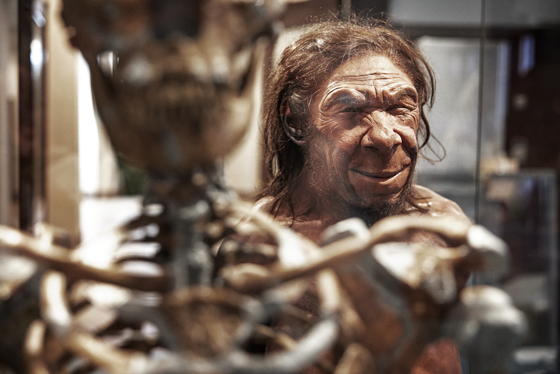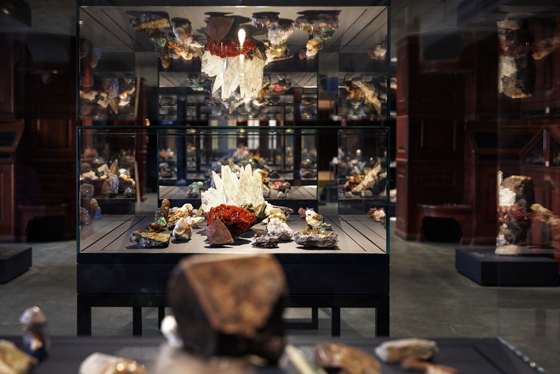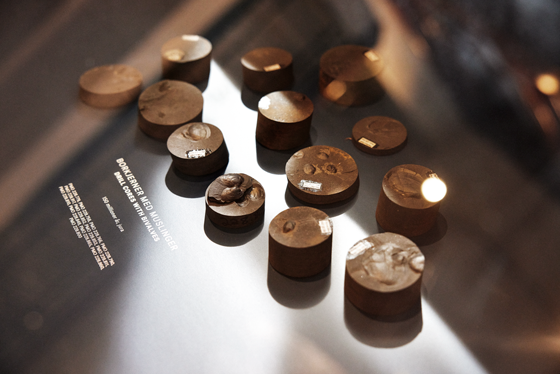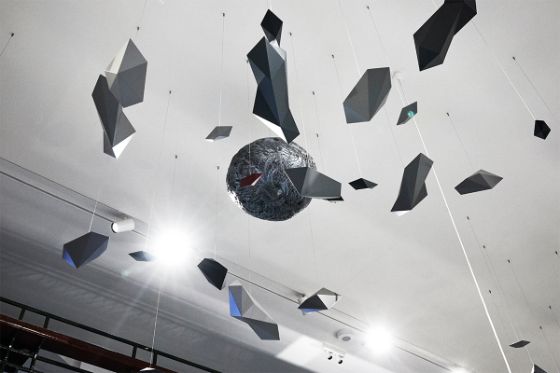The largest and most modern geological exhibitions in the Nordics. Meet dinosaurs, lizards, fossils, crystals and meteorites.
The six main stories of the new exhibitions
Evolution of Life

Earth and its life have evolved together through billions of years. Microorganisms, fungi, plants and animals are constantly adapting. Climate change, continental drift and great natural disasters send evolution in new directions. This exhibition displays snapshots of past ecosystems through geological time, from the origin of life to living organisms. Visitors also get to know important evolutionary events of selected groups of animals and plants.
Minerals and rocks

Minerals are everywhere. They form the our very foundation and are crucial raw materials for many of the products of our every day lives. In these exhibitions we display a wide variety of these beautiful, necessary, rare and distinct objects from our collections. This is a classic exhibition of minerals and rocks with emphasis on their systematics, origination and use. The histories of selected Norwegian mining sites and geological specialties are covered in separate displays.
History of an Ocean

The North Sea has existed for approximately 200 million years. Hidden beneath the ocean floor are clues to its origin and the life that that once existed here. Through drill cores we can study sediments and fossils, thereby exposing details about the ocean's history. Parts of the ocean floor of the Barents' Sea have ended up as the Svalbard archipelago. On land fossils are more easily accessible, which makes us able to reveal its history in even greater detail.
Stories from Space

The Earth originated approximately 4.5 billion years ago, and the Solar System approximately 50 million years before that. The oldest known rocks on Earth are "only" 4.3 billion years old. The age of rocks from space have helped us determine the age of the Solar System – some of the minerals in them even predate the Solar System itself. One part of this exhibition displays meteorites, space rocks that have survived the travel through the atmosphere and impacted on our surface. The other part of the exhibition portrays the Solar System.
Dynamic Earth

The Earth is often called the Blue Planet and it is truly distinct from the other planets of the Solar System. It is covered by oceans and green forests and has seasonal variations and air that can be breathed. And it is teeming with life. On the surface, its distinctiveness is obvious. However, also the Earth's interior and magnetic fields are different from the other planets. Without these physical characteristics, life could not have evolved the way it did. In this exhibition visitors will get to know the processes that make our planet unique and that all life depend upon.
Crystal Cave

In the basement of the new exhibitions visitors can for the first time wander through a reconstructed cave made from 20 tons of crystals. The original caves hold some of the world's most diverse collections of calcite crystals. The Crystal Cave exhibition is divided in three parts. In the two first rooms visitors can walk through the reconstructed mine cave with crystals, calcite variants and other minerals. In the last room are displayed spectacular fluorescent minerals from all over the world.